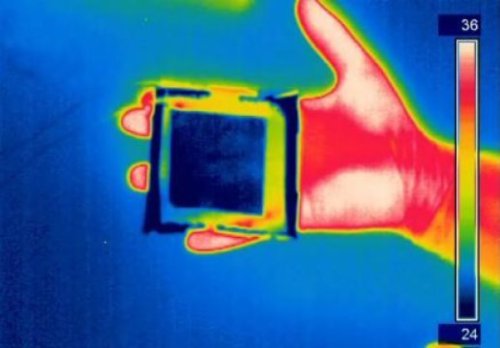#ionic liquids
Thermal camouflage disguises hot and cold
Hunters don camouflage clothing to blend in with their surroundings. But thermal camouflage – or the appearance of being the same temperature as one’s environment – is much more difficult. Now researchers, reporting in ACS’ journal Nano Letters, have developed a system that can reconfigure its thermal appearance to blend in with varying temperatures in a matter of seconds.
Most state-of-the-art night-vision devices are based on thermal imaging. Thermal cameras detect infrared radiation emitted by an object, which increases with the object’s temperature. When viewed through a night-vision device, humans and other warm-blooded animals stand out against the cooler background. Previously, scientists have tried to develop thermal camouflage for various applications, but they have encountered problems such as slow response speed, lack of adaptability to different temperatures and the requirement for rigid materials. Coskun Kocabas and coworkers wanted to develop a fast, rapidly adaptable and flexible material.
Post link
A gel that does not break or dry out
Developing robust gels full of ionic liquids
Researchers have developed a highly robust gel that includes large amounts of ionic liquid. The research team was led by Professor MATSUYAMA Hideto and Assistant Professor KAMIO Eiji (Kobe University Graduate School of Science, Center for Membrane and Film Technology). These findings were published on November 8 in Advanced Materials.
Ionic liquid is a substance made solely from ions, and it has unique properties – for example, it does not evaporate at normal temperatures or pressures, and it has high thermal stability. Gels that contain ionic liquid are known as ion gels. With the same properties as ionic liquids, as well as their ability to retain liquid form, they can potentially be used as electrolytes for rechargeable batteries and as membranes for gas separation. However, the low mechanical strength of typical ion gels limits their practical applications.
Post link


